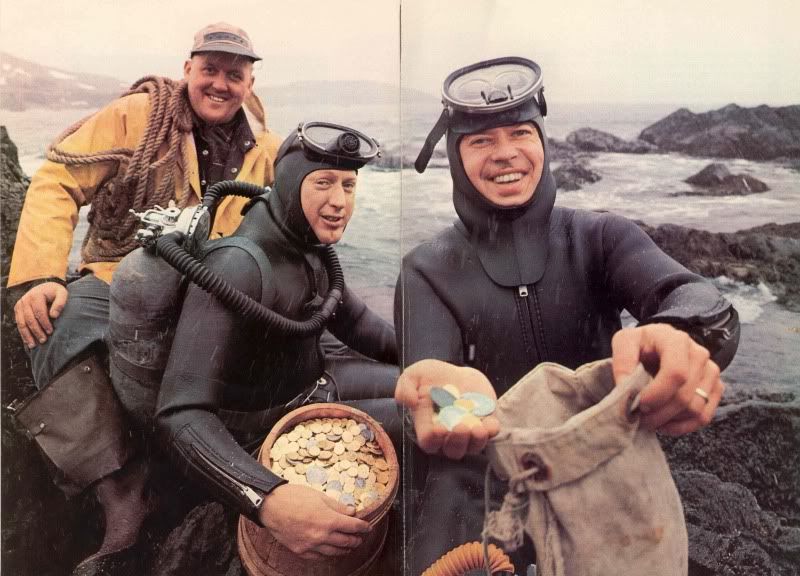8dust
Contributor
staying up late, getting ready for the holidays, and feeling a bit reflective.
I just put some of my Son's books away, and noticed he had one I had given him from my collection, stashed in his clubhouse (corner of bedroom, behind a chair, under an extra comforter, with the stuffed animals guarding the door), it's from the 70's I believe, was published by National Geographic, and is called "underwater adventures" or something like that.
I flipped through it to find one of my favorite pictures, thought on it for a moment, and have decided that particular photo is pretty much responsible for grabbing my imagination and hooking the 12yearold me on the idea of diving in the sea many years ago. It's not the pot-o-gold, mind you, but the feel of the moment that seems to be captured there on the rocks.
Anyway, I have single-hosed it since I was a kid, and now this last year that I have been getting a double hose rig together, I am drawn back to this photo. May have to blow the thing up and make a poster for the den/manroom.
Thought I'd share, so here it is. (don't sue me NG!)

I thought it might be kinda fun to hear what inspired some of the rest of you to put on a tank and take a splash, as a kid or as an adult.
Could be a pretty good thread...
8
I just put some of my Son's books away, and noticed he had one I had given him from my collection, stashed in his clubhouse (corner of bedroom, behind a chair, under an extra comforter, with the stuffed animals guarding the door), it's from the 70's I believe, was published by National Geographic, and is called "underwater adventures" or something like that.
I flipped through it to find one of my favorite pictures, thought on it for a moment, and have decided that particular photo is pretty much responsible for grabbing my imagination and hooking the 12yearold me on the idea of diving in the sea many years ago. It's not the pot-o-gold, mind you, but the feel of the moment that seems to be captured there on the rocks.
Anyway, I have single-hosed it since I was a kid, and now this last year that I have been getting a double hose rig together, I am drawn back to this photo. May have to blow the thing up and make a poster for the den/manroom.
Thought I'd share, so here it is. (don't sue me NG!)

I thought it might be kinda fun to hear what inspired some of the rest of you to put on a tank and take a splash, as a kid or as an adult.
Could be a pretty good thread...
8





